Boston’s subway history is a compelling narrative of innovation, urban evolution, and a commitment to efficient public transit.
Established in 1897, the Tremont Street Subway stands as the inaugural subway system in the United States, sparking a revolution in urban transportation.
This historic inception paved the way for the intricate web of subway lines that crisscross the city today.
From the transformative era of elevated structures to the Massachusetts Bay Transportation Authority (MBTA) strategic planning in the 1960s, each chapter in Boston’s subway history tells a tale of adaptability to technological advancements and demographic shifts.
As we delve into the annals of Boston’s subway system, we unravel a dynamic tapestry that continues to shape the city’s identity and provide an essential thread in its urban fabric. Thank you very much.
Genesis of the Underground: Inception of the Tremont Street Subway
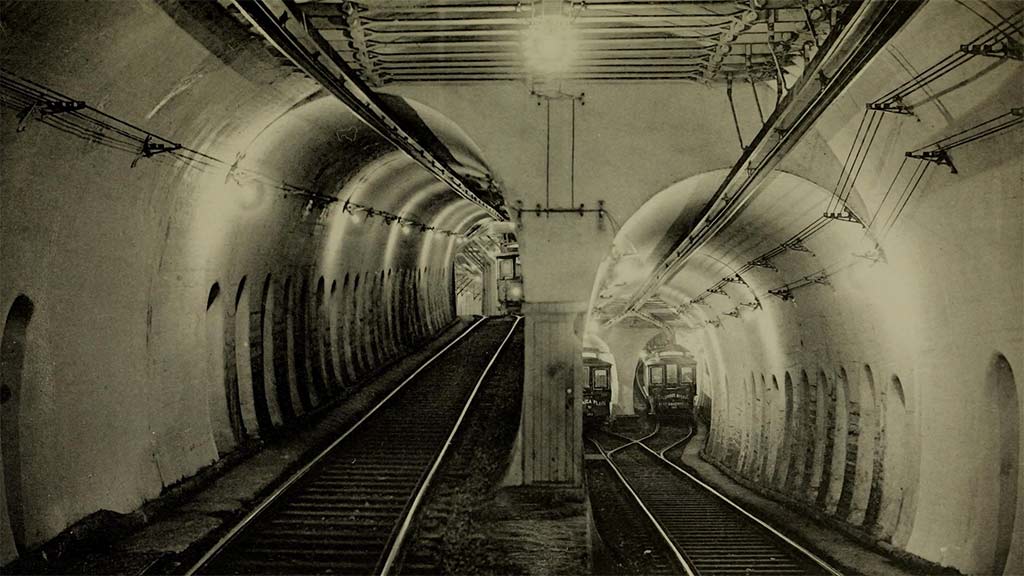
The Tremont Street Subway stands as a historic landmark in the realm of urban transportation, marking a significant turning point in the evolution of subway systems.
Its inception revolutionized public transit, setting the stage for the following underground networks.
This underground marvel, nestled beneath the bustling cityscape, has a captivating genesis that unveils the challenges, innovations, and foresight that shaped its creation.
Transit Congestion and Innovation
At the turn of the 20th century, Boston grappled with the challenges of an expanding population and increasing street congestion. The need for an efficient and rapid transit system became imperative.
The Tremont Street Subway emerged as a response to these challenges, introducing an innovative solution to alleviate congestion and enhance urban mobility.
First in America
The Tremont Street Subway opened in 1897 and is the first subway in the United States.
Its construction departed from traditional surface-level transportation, introducing a transformative underground approach that would soon be adopted by major cities nationwide.
Cutting-edge Engineering
The construction of the subway showcased cutting-edge engineering for its time.
Engineers faced challenges such as navigating through dense urban infrastructure, addressing geological concerns, and ensuring the safety and stability of the underground passages.
The success of the engineering feats employed in the Tremont Street Subway became a global blueprint for subsequent subway projects.
Electric Propulsion
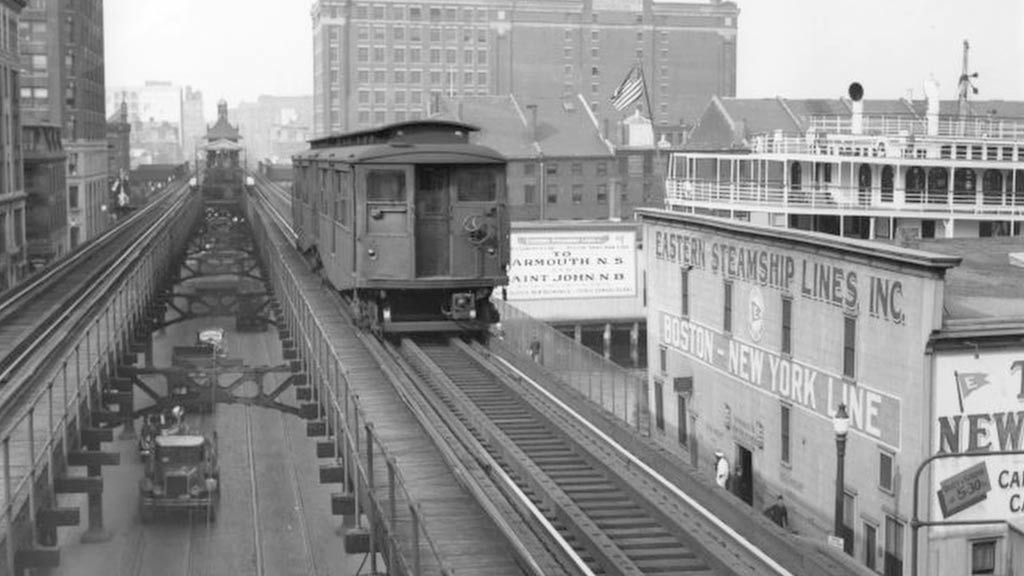
Unlike earlier subway systems that relied on steam engines, the Tremont Street Subway embraced electric propulsion, a revolutionary choice at the time.
The adoption of electric power reduced pollution and allowed for smoother, quieter operations, setting a standard that would be emulated in future subway developments.
Social Impact and Accessibility
The Tremont Street Subway transformed the social fabric of Boston by democratizing access to transportation.
It provided a more affordable and accessible means of travel, bridging gaps in mobility and opening up opportunities for individuals from diverse socio-economic backgrounds.
This marked a paradigm shift in urban planning, emphasizing the importance of public transit in fostering inclusive urban development.
Expansion and Legacy
The success of the Tremont Street Subway spurred further expansion and development of Boston’s subway system.
The legacy of this initial underground endeavour endures, with subsequent generations benefiting from the foresight and innovation that shaped its creation.
Today, the Tremont Street Subway stands as a testament to the enduring impact of visionary urban planning and serves as an inspiration for cities worldwide seeking to address the challenges of modern transportation.
Evolution of the Tremont Street Subway in Boston
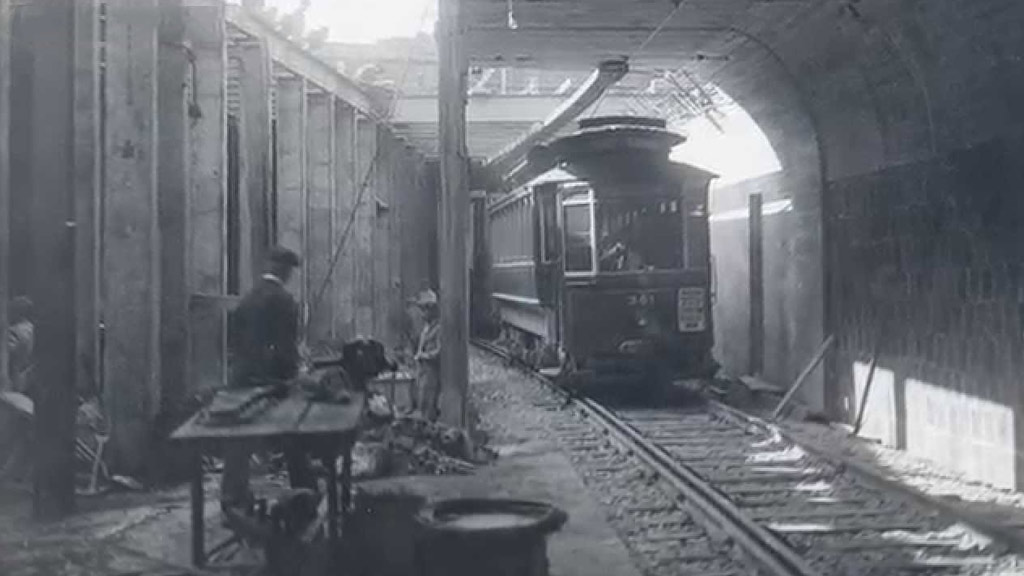
The Tremont Street Subway in Boston, inaugurated in 1897, represents a pioneering moment in the history of American public transportation but also a testament to adaptability and growth.
Over the years, the subway has undergone a series of transformative phases, evolving to meet the changing needs of Boston’s expanding population and the advancements in transportation technology.
Early Expansions and Integration (1897-1920s)
In its initial years, the Tremont Street Subway experienced rapid growth to accommodate the rising demand for efficient urban transportation. Extensions and branch lines were added, linking previously isolated neighbourhoods.
This period witnessed the integration of various lines, laying the foundation for a comprehensive subway network.
Transition to Elevated and Modernization (1930s-1950s)
The mid-20th century saw a shift in focus towards elevated structures as Boston sought to modernize its transit system. Elevated lines, such as the Orange Line, were introduced to supplement the existing subway infrastructure.
This transition not only expanded the reach of the subway but also embraced technological advancements in rail transportation.
The MBTA Era and Line Extensions (1964-present)
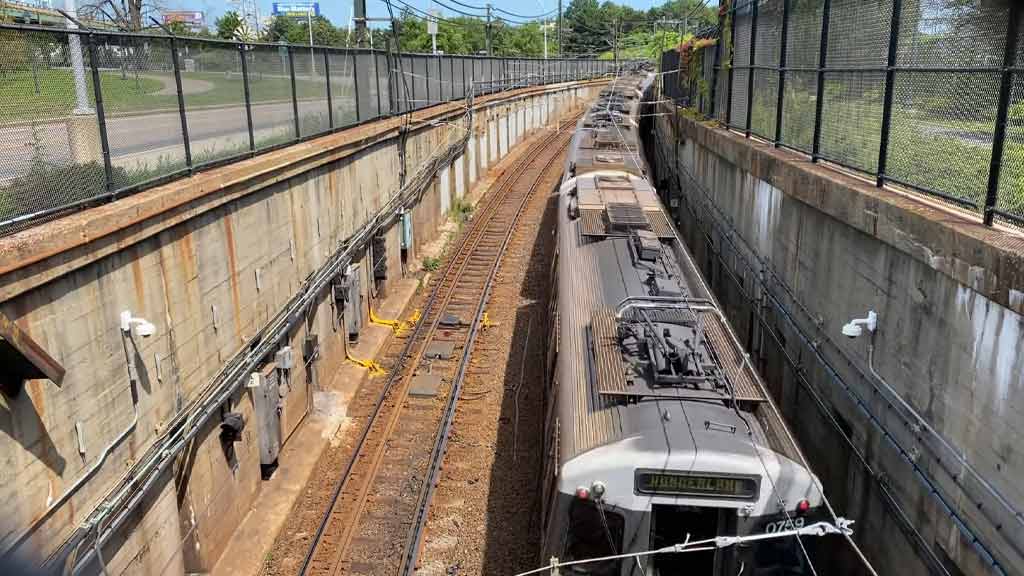
The Massachusetts Bay Transportation Authority (MBTA) assumed control in 1964, bringing a new era of management and investment.
The subway system witnessed further expansions and improvements, with the Green Line extensions reaching into new suburbs, enhancing connectivity and accessibility for commuters.
The MBTA’s commitment to upgrades and maintenance has kept the Tremont Street Subway a vital component of Boston’s transit landscape.
Technological Upgrades and Accessibility (1990s-present)
The late 20th century and beyond saw significant technological upgrades to enhance the rider experience and system efficiency.
Investments in automation, digital signage, and real-time tracking systems have transformed the subway into a more user-friendly and accessible mode of transportation.
These initiatives align with a broader commitment to making public transit a viable option for all residents.
Sustainability and Green Initiatives (21st century)
As environmental consciousness gained prominence, the Tremont Street Subway underwent initiatives to reduce its carbon footprint.
The integration of energy-efficient technologies, emphasis on recycling, and the introduction of eco-friendly practices contribute to the subway’s sustainability.
These measures align with broader city and global efforts to create greener and more sustainable urban transportation systems.
Adapting to Future Challenges (Ongoing)
The evolving landscape of urban transportation demands ongoing adaptation. The Tremont Street Subway continues to address contemporary challenges such as population growth, technological advancements, and changing commuter patterns.
Planning for future expansions, integrating emerging technologies, and ensuring the subway remains a vital component of Boston’s dynamic transit ecosystem are central to its continued evolution.
In tracing the evolution of the Tremont Street Subway, it becomes evident that its story is one of resilience, adaptability, and a commitment to meeting the evolving needs of the city and its residents.
Rise of the Orange Line in Boston Subway History
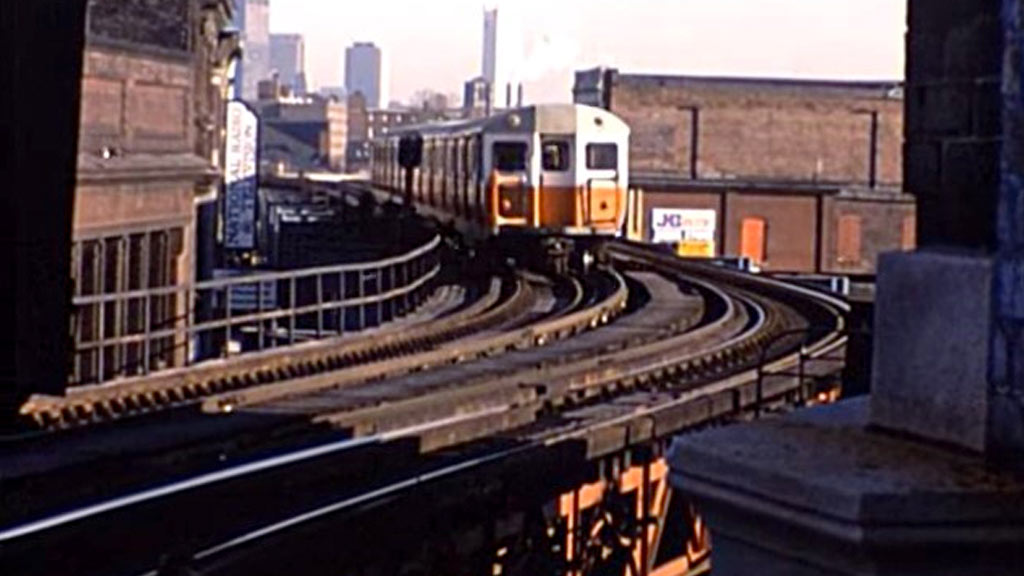
The Orange Line in the Boston subway system has emerged as a pivotal player in the city’s urban transportation network.
Spanning over a century, its history reflects the evolution of public transit, urban development, and the resilience of a transportation artery central to the daily lives of Bostonians.
Inception and Early Growth (1901-1950s)
The Orange Line originated as part of the Boston Elevated Railway’s expansions in the early 20th century, initially serving the suburban communities of Malden and Everett.
Over the decades, the line underwent extensions and reconfigurations, gradually evolving to connect more neighbourhoods and facilitate increased ridership.
Transition to Elevated Structure (1940s-1950s)
In the mid-20th century, the Orange Line transformed significantly, transitioning from a predominantly surface-level route to an elevated structure.
This shift aimed to improve efficiency, reduce congestion, and modernize the line to meet the growing demands of Boston’s expanding population.
Integration with the MBTA (1964)
The Massachusetts Bay Transportation Authority (MBTA) assumed control of the Boston subway system in 1964, unifying various transit entities under a single management structure.
This marked a crucial juncture for the Orange Line, aligning it with broader regional transit planning and investment strategies.
Southwest Corridor Project (1970s-1980s)
The 1970s brought about a major redevelopment initiative, the Southwest Corridor Project.
This ambitious undertaking not only realigned and improved the Orange Line but also incorporated the development of a multi-use corridor featuring parks and recreational spaces.
The project showcased a commitment to holistic urban planning and revitalized the Orange Line as a key component of Boston’s transit system.
Modernization and Relocation (1987-2000s)
In 1987, the Orange Line underwent a relocation, moving from the Washington Street elevated tracks to a new tunnel. This transition improved efficiency, reduced travel times, and enhanced the overall commuter experience.
Introducing new rolling stock and station upgrades further modernized the line, ensuring its continued relevance in the rapidly changing urban transportation landscape.
Renewal and Expansion (21st Century)
The 21st century brought renewed focus on the Orange Line’s capacity and service quality. Investments in new train cars, station renovations, and accessibility improvements aimed to enhance the rider experience.
Additionally, discussions of potential extensions and further integration with other transit modes underscore the Orange Line’s ongoing importance in Boston’s transportation infrastructure planning.
The rise of the Orange Line in Boston’s subway history is a testament to the city’s commitment to adapting its transit system to meet the evolving needs of its residents.
Boston’s Subway System Through the Decades
Boston’s subway system, with its rich history dating back to the late 19th century, has undergone significant transformations over the decades.
Evolving in response to changes in urban planning, technology, and commuter needs, the subway system reflects the dynamic character of Boston’s transportation landscape.
Late 19th to Early 20th Century: The Birth of the Tremont Street Subway (1890s-1920s)
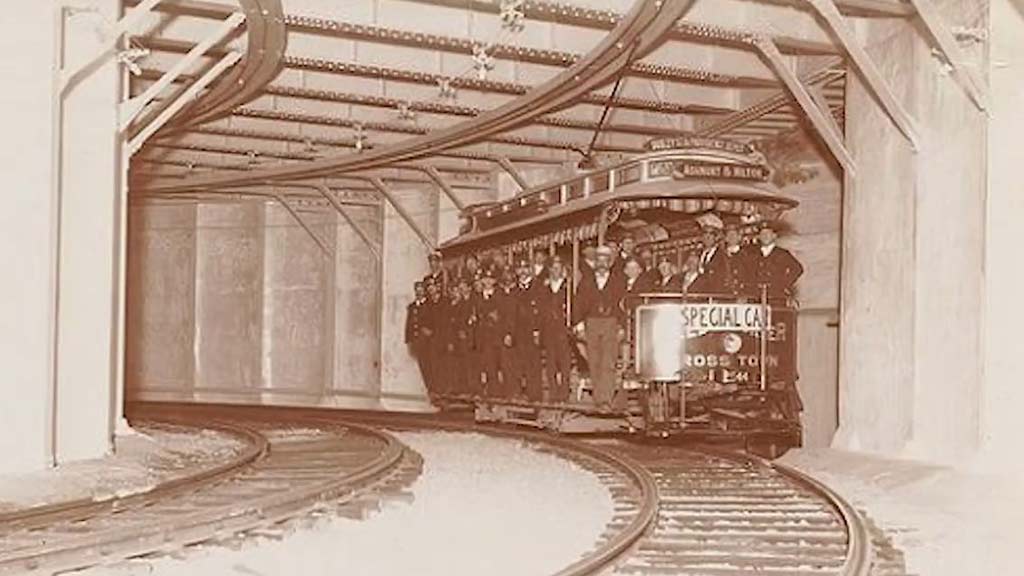
- Inception of the Tremont Street Subway (1897): The late 19th century marked the birth of the Tremont Street Subway, the first subway in the United States. Driven by the need to address congestion on city streets, the subway introduced a revolutionary underground transit system, setting the stage for future expansions.
- Early Expansions and Integration (the 1900s-1920s): The initial decades saw rapid expansions, connecting various neighbourhoods and integrating new lines. The subway system laid the groundwork for a comprehensive urban transit network, fostering increased accessibility and mobility for Boston residents.
1930s-1950s: Elevated Structures and Modernization
- Transition to Elevated Lines: In response to growing demand and technological advancements, the 1930s witnessed the introduction of elevated structures, including lines such as the Orange Line. The move aimed to modernize the system, reduce congestion, and provide a more efficient mode of transportation.
- Post-War Developments: The aftermath of World War II brought about post-war urban development, and the subway system shaped the city’s growth. Investments in infrastructure and the introduction of new lines contributed to modernising Boston’s transit network.
1960s-1980s: MBTA Control and Comprehensive Planning
- MBTA Takes Control (1964): The Massachusetts Bay Transportation Authority (MBTA) assumed control in 1964, unifying various transit entities. This era marked a shift towards comprehensive regional planning, focusing on improving coordination and efficiency across different modes of transportation.
- Southwest Corridor Project (1970s-1980s): The Southwest Corridor Project, spanning the 1970s and 1980s, realigned and improved existing subway lines, including the Orange Line. The project integrated transit with urban planning, creating green spaces and enhancing the overall quality of life along the corridor.
1990s-Present: Technological Advancements and Sustainability
- Technological Upgrades: The late 20th century and beyond witnessed technological advancements in the subway system. Automation, digital signage, and real-time tracking systems were introduced to enhance the rider experience, making public transit more user-friendly and efficient.
- Sustainability Initiatives: In response to environmental concerns, the subway system embraced sustainability initiatives in the 21st century. Energy-efficient technologies, recycling programs, and a commitment to reducing the carbon footprint underscored Boston’s dedication to creating a greener and more sustainable transit system.
Ongoing Challenges and Future Prospects
- Adapting to Changing Commuter Patterns: As the city evolves, the subway system faces ongoing challenges, including adapting to changing commuter patterns, addressing capacity issues, and integrating emerging technologies.
- Future Expansions and Improvements: Ongoing discussions and plans for future expansions, station upgrades, and integration with other transit modes highlight the commitment to ensuring that Boston’s subway system remains a vital and efficient component of the city’s transportation infrastructure.
Boston’s Subway in Popular Culture
Beyond its role as a practical means of transportation, Boston’s subway system has found its way into popular culture, becoming a backdrop for various forms of artistic expression.
From literature to film and music, the subway has become an integral part of Boston’s cultural narrative, often symbolizing urban life, diversity, and the shared experiences of its residents.
Literature
“The Dante Club” by Matthew Pearl (2003)
In this historical thriller, the Boston subway plays a role in the unfolding of the plot. The novel, set in the 19th century, explores Boston’s intellectual and social milieu, with scenes set in and around the subway system.
“The Given Day” by Dennis Lehane (2008)
Lehane’s novel, set against the backdrop of the Boston Police Strike of 1919, incorporates scenes in and around the subway.
The subway becomes a metaphor for the complexities of urban life and social tensions during a pivotal period in Boston’s history.
Film and Television
“The Departed” (2006)
Martin Scorsese’s crime thriller features iconic scenes set in the Boston subway, capturing the gritty and authentic urban atmosphere. The subway is a dynamic backdrop for intense moments in the film, contributing to its portrayal of the city’s underbelly.
“Mystic River” (2003)
Directed by Clint Eastwood, “Mystic River” includes subway scenes that add a layer of urban realism to the narrative. The subway becomes a setting for moments of reflection and contemplation, emphasizing the characters’ connection to the city.
“The Town” (2010)
Ben Affleck’s crime drama, set in the Charlestown neighbourhood of Boston, features scenes filmed in the subway. The film uses the subway to showcase the city’s distinctive urban geography and as a means of escape for the characters.
“The Social Network” (2010)
David Fincher’s film about the founding of Facebook includes a memorable scene set on the Red Line of the Boston subway. The sequence highlights the social dynamics and technological advancements of the time.
Music
“Charlie on the MTA” by The Kingston Trio (1959)
This folk song tells the story of a man named Charlie who was trapped on the Boston subway due to a fare increase. The song became a symbol of the frustrations commuters faced and contributed to discussions about public transit affordability.
“Laid So Low (Tears Roll Down)” by Tears for Fears (1992)
The music video for this song features footage shot on the Boston subway, providing a visual backdrop for the band’s exploration of personal and societal challenges.
Visual Arts
“Red Line” by Caleb Neelon (2014)
This mural located at the Alewife Station on the Red Line exemplifies how the subway system has inspired visual art. Neelon’s work captures the vibrancy and diversity of the communities along the Red Line.
With its distinctive character and historical significance, Boston’s subway system has become a symbolic and tangible element in various forms of popular culture.
FAQs
How has the Orange Line contributed to Boston’s subway evolution?
The Orange Line, originating in the early 20th century, transitioned from surface-level to elevated structures and later to a modern tunnel.
Its evolution reflects Boston’s commitment to efficient urban transit, showcasing adaptability to technological advancements and demographic changes in the city.
What role did the MBTA play in shaping Boston’s subway system?
The Massachusetts Bay Transportation Authority (MBTA) assumed control in 1964, unifying transit entities.
This marked a pivotal era of comprehensive regional planning, streamlining operations and investments. The MBTA’s stewardship ensures a coordinated and efficient evolution of Boston’s subway infrastructure.
How did the Southwest Corridor Project impact the Boston subway system?
The Southwest Corridor Project, spanning the 1970s-1980s, revitalized the subway, realigning and improving existing lines like the Orange Line.
Beyond infrastructure upgrades, the project integrated transit with urban planning, creating green spaces and enhancing the quality of life along this critical transportation corridor.
What recent developments reflect Boston’s commitment to sustainable subway practices?
In the 21st century, Boston’s subway system embraced sustainability initiatives.
Energy-efficient technologies, recycling programs, and a focus on reducing the carbon footprint highlight the city’s dedication to creating a greener and more environmentally friendly transit system to benefit residents and the environment.
Wrapping Up
In tracing the rich tapestry of Boston’s subway history, it’s evident that each station and tunnel holds a narrative of innovation, adaptability, and urban development.
From the pioneering days of the Tremont Street Subway to the adaptive evolution of lines like the Orange Line and the transformative impact of projects like the Southwest Corridor, Boston’s subway system reflects the city’s dynamic spirit.
The Massachusetts Bay Transportation Authority’s role, coupled with ongoing sustainability initiatives, signifies a commitment to ensuring that the subway remains a vital, efficient, and eco-conscious thread in the fabric of Boston’s urban life. Thank you so much.
Jaclyn Lowe